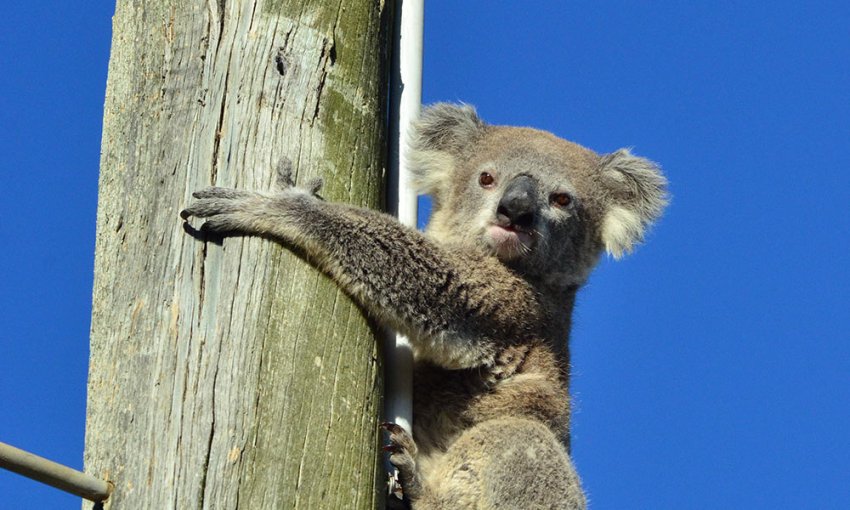
The ubiquitous Commonwealth Games mascot Borobi the blue koala belies the fate of the “Aussie icon” it represents. It is ironic that Borobis flourish in the very region where koala numbers have declined drastically in recent years.
Koalas are an endangered species in Queensland, NSW and the ACT and land clearing has long been recognised as the culprit. As well as the animals killed during the actual process of land clearing, the destruction of habitat results in increasing population losses.
Large scale bulldozing in Queensland triggered by the former Campbell Newman government's relaxed tree clearing laws has resulted in an estimated 5000 koala deaths.
In recent years, koala numbers on the east coast have declined by:
- 53% in Queensland;
- 26% in New South Wales;
- 80% in south-western Queensland;
- 80% in south-eastern Queensland;
- 80% in the Pilliga Forest in north-western NSW.
As well, up to 250 koalas are hospitalised annually in the Port Macquarie-Hastings region of north-eastern NSW.
The NSW government is echoing the former Queensland Liberal-National Party government in making it easier for farmers to clear bushland. The government’s own experts have warned that 99% of koala habitat on private land is left exposed to clearing by these laws and fear there would be a spike in tree loss of up to 45%.Development, and the loss of koala habitat for housing and infrastructure, was considered a key reason why the koala was added to the “vulnerable” species list in 2012.
But a report co-written last year by World Wildlife Fund (WWF) Australia principal conservation scientist Martin Taylor challenged the idea that the state’s koala populations are most at threat by the growth of Brisbane, the Gold Coast and Sunshine Coast. He estimated that 94% of the estimated 5000 koala deaths due to habitat loss in Queensland between mid-2012 and mid-2016 occurred outside the state’s heavily developed south-east. He found tree clearing in regional and rural Queensland is now 15 times more destructive to the state’s koala populations than urban sprawl.
“Most tree-clearing in Queensland overlaps mapped habitats of threatened species,” Taylor said. “Despite this, most of it proceeds without any attempt to seek approval under threatened species laws. The enforcement of state and federal nature and biodiversity conservation laws appears to have been minimal.”
He said once-thriving populations of koalas in the south-east corridor had “collapsed” over several decades. But the scale of that problem is now dwarfed by the clearing of agricultural land, putting the species under further threat.
“Outside of Queensland’s cities and towns, the destruction of bushland happens on a vast scale,” Taylor said. “The facts are quite clear, koalas occur broadly throughout the state and if you bulldoze koala habitat you’re pushing them closer towards extinction.”
Taylor’s study, which he said was “deliberately conservative”, estimated koala deaths across the state by mapping the marsupials’ habitat. The study assumed that when habitat was bulldozed, the animals there mostly died.
The Queensland government introduced new land clearing legislation in March to restore many of the restrictions that were removed by the Newman government in 2013. At the time environmentalists welcomed the changes as a good first step, welcoming the opportunity to make submissions prior to the bill being considered by committee.
However, analysis by Taylor found many of the forests cleared between 2013 and 2016 (590,785 hectares) were on land mapped as “category X” or “exempt”, meaning it was outside the scope of the Vegetation Management Act.
The parliamentary committee investigating proposed changes has received 14,000 submissions and held hearings in several regional centres, reflecting the issue’s controversial nature.
The committee is expected to report to parliament on April 23.
Like the article? Subscribe to Green Left now! You can also like us on Facebook and follow us on Twitter.